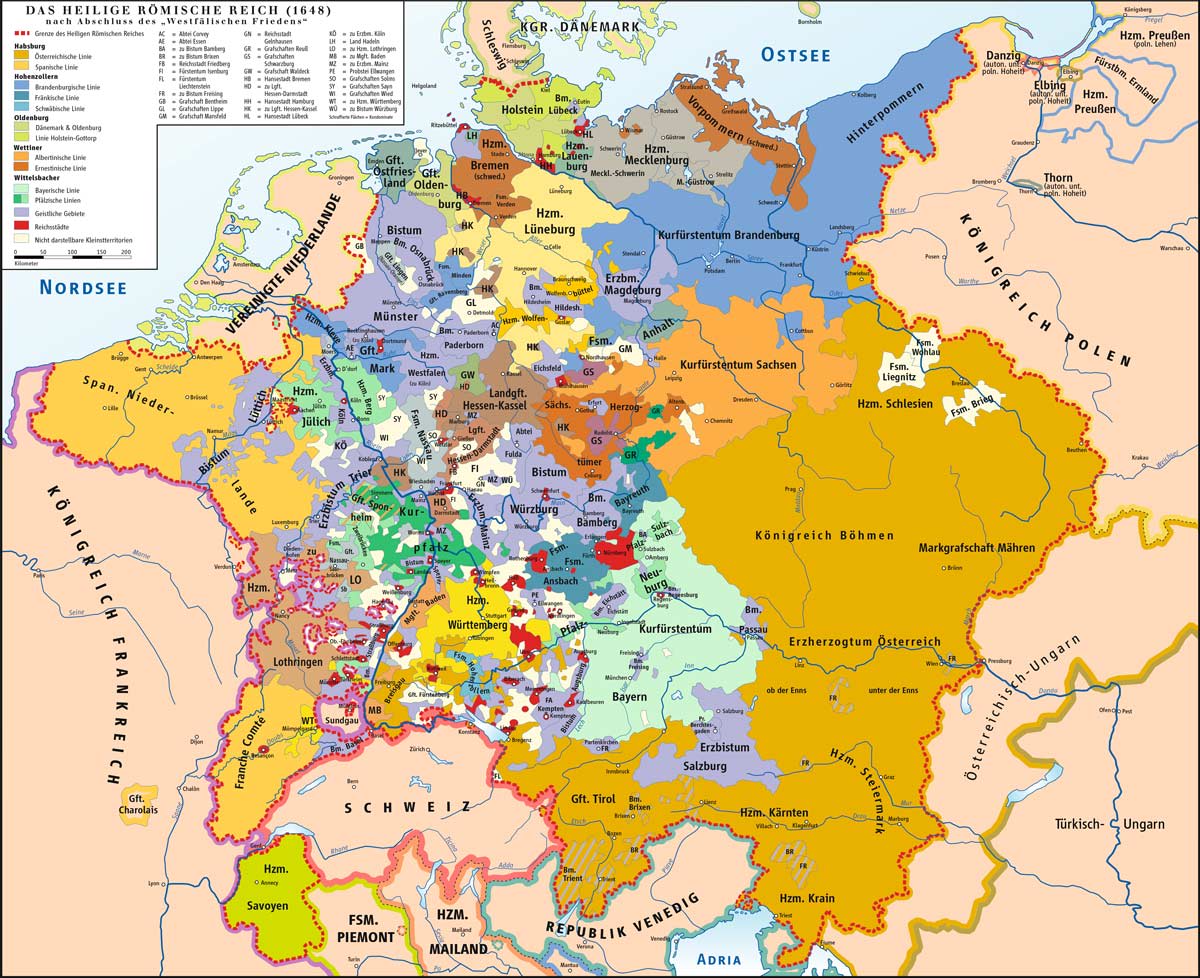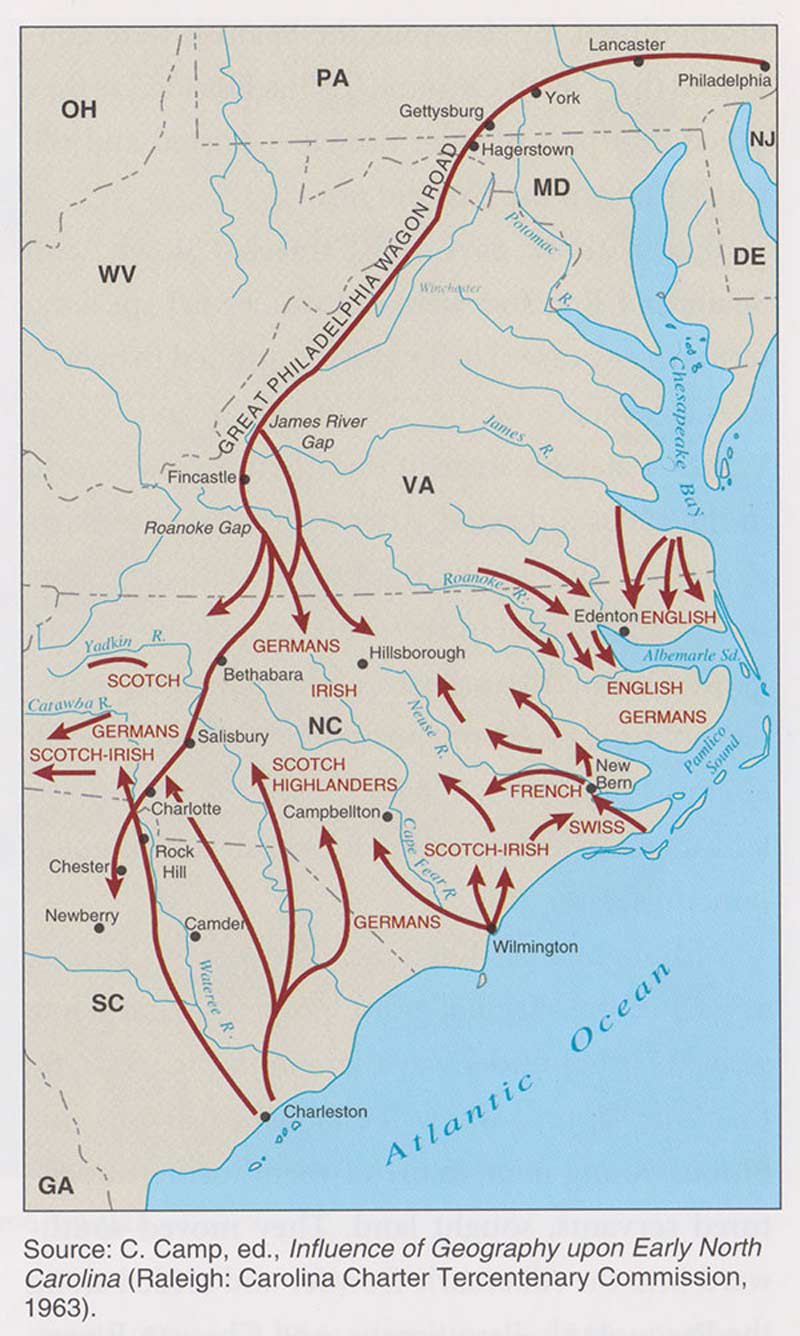The U.S. Census Bureau’s American Community Survey in 2010 helped track ancestry and family lineage within the nation, and its discovery may come as a surprise to some, confirmation for others. Out of a population of three hundred and eight million, 15-16% of the total population claimed part or all German ancestry. The Holy Roman Empire of the German Nation, official title recognized at the Diet of Cologne in 1512, encompassed the following borders on this map:

It consisted of thousands of Prince-run city states, and unless you were a member of the ruling class, you relied on your local prince or royal family to dictate where you lived, what work you would do for the city state, and even your religion. The alliance of England and the Holy Roman Empire of the German Nation, at a time of war, starvation, and overcrowding, led to a harrowing journey of many to the shores of America. Why did the English desire to bring German labor to their colonies across the Atlantic Ocean? One primary source that sheds light on English sentiment to the empirical allies, is Richard Hakluyt’s book “Inducements to the Liking of the Voyage Intended towards Virginia” (1585)
“Men skilfull in burning of sope ashes, and in the making of Pitch and Tarre, and Rozen…be fetched out of Prussia and Poland, which are thence to be had for small wages, being there in a maner of slaves.”
When visiting Colonial Williamsburg and the surrounding historic locations many guests are surprised to find that glassmakers and carpenters, described as “8 dutchmen and poles”, arrived October 1, 1608, in the Jamestown settlement. The arrival in 1620 of “mineral specialists and saw-millwrights” further bolstered Jamestown with specialized labor to glean raw materials from Virginia. Through the examination of major periods of immigration, as well as German migration patterns in the American colonies, the meticulously planned use of their labor and presence becomes very clear.

The Germans’ peak immigration between 1683 and 1776 brought people from the Holy Roman Empire through many points of entry, north and south. Virginia surveyors and government enticed German settlers to fill the outlands in the Shenandoah Valley, far from the capital city, by offering cheaper land (£8-9 per 100 acres). As the Capitol was erected in Williamsburg, the closest German settlements could be found hundreds of miles from the capital city. Governor Alexander Spotswood (1710-1722) created an iron producing community near Fredericksburg and Fort Germanna with the use of primarily German labor.
Raw materials flowed from the Shenandoah Valley and German settlements to English ships. German settlers (along with Irish, Scots, and Free Blacks) provided a buffer from the French and American Indians in the western wilderness. German contributions to the expansion of the British Empire were continuous, but they were not enough to soften the prejudice some English held for these outsiders. Colonel George Washington remarked in 1748 during a surveying expedition “They seem to be an ignorant set of people…” referencing their language, social structure, religious practices, and their unwillingness to become part of proper English society. Yet without German contributions, a surveyor like Col. Washington would have had a tougher task in his work mapping western Virginia. The Fry/Jefferson map (first published in 1753) was based primarily upon the knowledge of the area that German settlers such as Johan Peter Saling had. Samuel Stalnaker was recognized as the first European to find the Cumberland Gap.

When mentioning German people of the 18th century, the most common association guests to Colonial Williamsburg have refer to the “blood thirsty” Hessian mercenaries, used by the British Army to bolster their ranks in the American Revolution. Occasionally guests will mention settlements of the German’s in Pennsylvania, Northern New York, and the Shenandoah Valley of Virginia. My research shows that German influence exists throughout the English colonies from the moment colonization was an idea. Germans left the horrible conditions of the Holy Roman Empire, on a journey of uncertainty, to an English land filled with dangers and ruled over by a culture that never fully accepted them into mainstream society. These settlers took the risk, and carved out a piece of America for themselves, leaving a rich legacy for us today.
J.E. Knowlton has worked for the Colonial Williamsburg Foundation for eight years, five of them as Supervisor of Actor Interpreters. Mr. Knowlton is a proud member of Phi Alpha Theta Omega Pi chapter of the History Honor’s Society, holds a B.A. in History & Religious Studies from Virginia Wesleyan University. He also holds a Master of Letters and Master of Fine Arts from Mary Baldwin University with a focus on Shakespeare and Renaissance Literature in Performance. He looks forward to continuing to expand the German story here in Williamsburg for guests and is working hard to learn conversational German within the next year.
Resources
O'Connor, Liz, and Gus Lubin. “The Largest Ancestry Groups In The United States.” Business Insider. Business Insider, August 13, 2013. https://www.businessinsider.com/largest-ethnic-groups-in-america-2013-8.
Wust, Klaus. The Virginia Germans. Charlottesville: University Press of Virginia, 1989
Colonial Williamsburg is the largest living history museum in the world. Witness history brought to life on the charming streets of the colonial capital, plus, explore our newly expanded and updated Art Museums of Colonial Williamsburg featuring the nation’s premier folk art collection, plus the best in British and American fine and decorative arts from 1670–1840. Check out sales and special offers to plan your visit.
